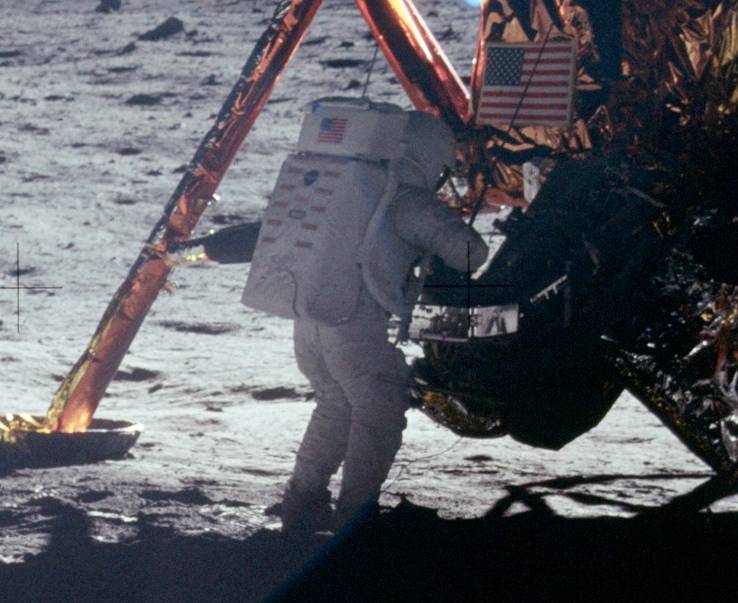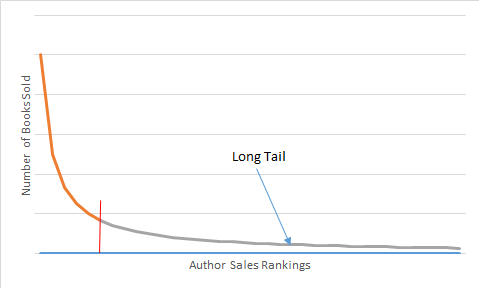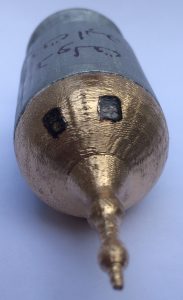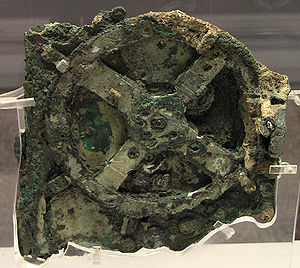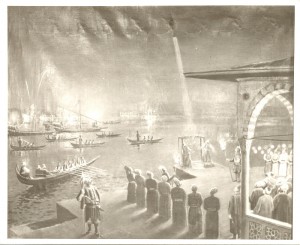As you may have heard, July 20, 2019 marked fifty years since a human first set foot on the Moon. What follows is one fiction writer’s perspective of that event.
I was eleven years old then, and watched the landing on my family’s small black-and-white TV. I stayed awake to watch the “first step” too, though it occurred close to 10 pm central time. There was no way to watch that live event and not feel pride and awe. Even those who balked at the mission’s expense knew how historic it was.
Fiction writers had long been imagining the moment, and had prepared us for the wonder of it. From Lucian’s True History, to Rudolf Erich Raspe’s Baron Münchhausen’s Narrative of his Marvelous Travels and Campaigns in Russia, to Edgar Allan Poe’s “The Unparalleled Adventure of One Hans Pfaall,” writers had taken us to Earth’s silver satellite in our imagination.
Later science fiction writers gave the trip greater clarity and realism in such works as Jules Verne’s From the Earth to the Moon, H.G. Wells’ The First Men in the Moon, and Robert Heinlein’s The Man Who Sold the Moon.



As a writer of historical technological fiction, I’ve written of flights to the moon occurring before 1969 as well. In “A Tale More True,” a rival of Baron Münchhausen travels to the moon in 1769 using a gigantic clock spring. In “To Be First,” my characters from an alternate Ottoman Empire are returning from the moon in 1933 when the action starts. And in “The Unparalleled Attempt to Rescue One Hans Pfaall,” you can read about Dutch citizens traveling to the moon by balloon in the 1830s.
Although fiction writers helped us imagine the first trips to the moon, nobody prepared us for a five-decade lapse in missions. Nobody in 1969 thought we’d finish out the Apollo series of moon landings, and then stay away for over fifty years. If you could travel back in time from 2019 to 1969 and tell that to the world, not a soul would believe you.
The moon was ours! Surely by 1979 we’d have a moon base, then by 1989 a moon colony, and by 1999 the moon would be our springboard for trips to asteroids and other planets. The excited folks of 1969 would inform the time traveler that by 2019, naturally, average families would take trips to the moon for vacations.
How odd that we’ve stuck to our planet and near orbit for close to forty-seven years (since Apollo 17). Historians may well wonder what took humanity so long to go back, given the advances in technology that have occurred since the early 1970s. Here are some possible reasons for the long gap:
- The Mercury/Gemini/Apollo series ingrained in the public mind that only governments can finance moon missions, and only at colossal expense.
- The moon wasn’t that exciting, after all. Gray, dusty, airless, and lifeless, it was a place only an astronomer could love.
- The war in Vietnam and the Watergate scandal shattered the public’s former confidence in government’s ability to accomplish great tasks.
- We’d gone there to accomplish the late President Kennedy’s goal of landing a man on the moon before the end of the decade, and to win the supposed ‘space race’ with the Soviet Union. With no further goal, schedule, or apparent rival, we’d lost all impetus for further trips.
We’ll go back to the moon, of course, and with any luck, the next lunar landing will be witnessed by you and by—
Poseidon’s Scribe

